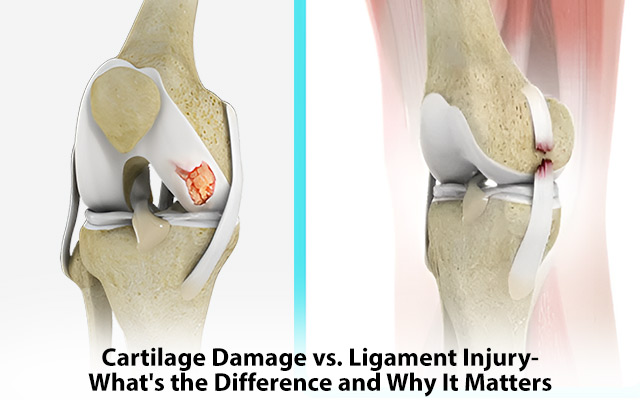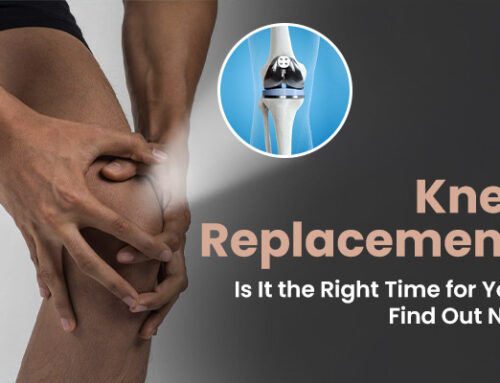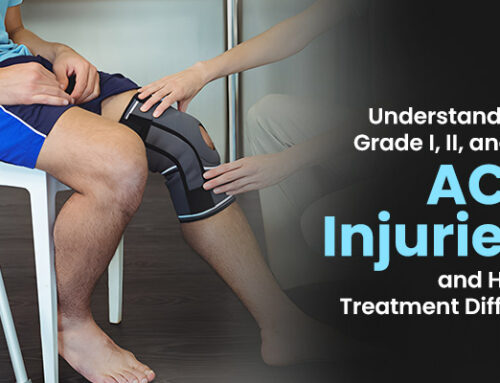When it comes to your joints, both cartilage and ligaments play a major role in keeping everything moving smoothly. Cartilage acts as a cushion between bones, while ligaments keep your joints stable by holding the bones together.
If either one gets damaged, it can affect how you walk, bend, or even stand. Everyday, movements start to hurt, and your mobility takes a hit.
In this blog, we will help you understand the key differences between cartilage and ligament injuries, why they heal differently, what to expect if you have suffered either, and when surgery becomes necessary.
What is the difference between ligament and cartilage?
Let’s start with the basics. Though cartilage and ligaments are both connective tissues, they have very different roles in your joints.
Cartilage is a smooth, slippery tissue that covers the ends of bones where they meet. Its job is to reduce friction and absorb shock. It makes sure your bones don’t grind against each other during movement. Since cartilage doesn’t have its own blood supply, it can’t repair itself easily.
Ligaments, on the other hand, are strong, elastic bands that connect one bone to another. They provide strength and stability to the joint, especially during physical activities. Ligaments do have some blood supply, which gives them a better chance of healing than cartilage.
In short, cartilage cushions, while ligaments stabilise.
Why does an injury to cartilage heal differently than an injury to bone?
The main reason is blood flow.
Bones are living tissues packed with blood vessels. So, when a bone breaks, the blood brings in oxygen, nutrients, and healing cells to repair the damage. That’s why fractured bones often heal completely with rest and proper care.
Cartilage is different. It doesn’t have blood vessels of its own. Instead, it relies on the surrounding joint fluid to receive nutrients. As a result, cartilage heals very slowly, and in many cases, doesn’t heal on its own at all.
This makes cartilage injuries more difficult to treat and often leads to long-term problems unless medical or surgical intervention is performed.
What happens if cartilage is damaged?
Cartilage damage can make even the simplest tasks painful. You may notice that your joint feels sore, stiff, or swollen. There could be a grinding sound when you move or even a sudden “locking” of the joint.
If left untreated, the damage can worsen and lead to the development of early arthritis. You might start avoiding activities, favouring the joint, or changing your posture to cope with the discomfort. Over time, this affects other joints too.
In mild cases, rest and physiotherapy may help. However, if the damage is significant, especially in weight-bearing joints like the knee, surgery often becomes essential. It helps in restoring mobility and preventing further deterioration.
Can you fully recover from cartilage damage?
This depends on a few things, like your age, the severity of the damage, and the treatment approach.
In minor cases, lifestyle changes and physiotherapy can reduce discomfort. However, cartilage doesn’t regenerate like skin or bone. Once it’s damaged, it won’t grow back naturally.
Surgical treatment becomes essential when:
- The damaged area is large.
- The joint becomes unstable or painful during normal movement.
- Conservative options fail to offer relief.
Treatment Options for damaged cartilage
Cartilage doesn’t heal on its own because it has no blood supply. That’s why, when it’s badly damaged, surgery becomes necessary.
Arthroscopy (also called keyhole surgery) is a minimally invasive procedure. That means the surgeon makes tiny cuts and uses a small camera to see and treat the inside of your joint without a large incision.
This method is commonly used to treat cartilage damage, such as in the knee, shoulder, or ankle. Some of the procedures done during arthroscopy include:
- Debridement (smoothing or removing rough cartilage): If your cartilage is frayed or loose, it can be trimmed to reduce pain and prevent locking of the joint.
- Microfracture surgery (stimulating new tissue growth): Tiny holes are made in the bone under the damaged cartilage. This helps form new cartilage-like tissue, which reduces friction and pain.
- Cartilage grafting (replacing with healthy cartilage): Sometimes, healthy cartilage is moved from a non-weight-bearing part of your joint or taken from a donor and placed where the damage is. This is done when the damaged area is large or affects your daily movement.
These procedures help relieve pain, restore smooth movement, and delay arthritis. Recovery is usually quicker than open surgery, and most people can walk within days (with guidance from your doctor).
How long does ligament damage take to heal?
Ligament injuries are usually classified into three grades:
- Grade 1 (Mild sprain): The ligament is stretched but not torn. This usually heals within 1–3 weeks.
- Grade 2 (Partial tear): More serious, with swelling and instability. Healing may take 3–6 weeks with rest, physiotherapy, and bracing.
- Grade 3 (Complete tear): The ligament is fully torn, often requiring surgery, followed by 4–6 months of rehabilitation.
Surgery is often recommended if:
- The joint feels unstable.
- You have a complete ligament rupture.
- You want to return to high-level physical activity.
For example, ACL tears in the knee often require reconstruction using grafts. Surgery helps restore joint strength and prevents further injury.
How do you know if your cartilage is damaged?
Cartilage damage can be tricky because it may not hurt right away. However, over time, signs begin to appear. Here’s what to watch out for:
- Persistent joint pain, especially during movement.
- Swelling or stiffness that doesn’t go away.
- A feeling of the joint “catching” or locking.
- Grinding or popping sounds in the joint.
- Reduced flexibility or difficulty bearing weight.
Surgery option- Ligament Reconstruction Using Autograft and Allograft
When a ligament is completely torn, like in the case of an ACL (anterior cruciate ligament) tear in the knee, it usually doesn’t heal on its own. That’s when ligament reconstruction surgery is needed.
In this surgery, a new ligament is created using a graft (a piece of tendon tissue that replaces the torn ligament). The graft can come from your own body or from a donor.
Autograft
The surgeon takes strong tissue from your own hamstring or knee tendon (thigh muscle or knee cap area) and uses it to create a new ligament. This option works well for younger, active people and reduces the risk of rejection. However, it can cause temporary pain at the place where the tissue is taken.
Allograft
The graft is taken from a donor. This avoids the need to remove tissue from your own body. It’s often chosen for older patients or for repeat surgeries. Healing may take slightly longer, but the recovery is usually more comfortable in the early stages of recovery.
Conclusion
Cartilage and ligament injuries might seem similar, but they are very different in how they affect your body and how they heal. While ligaments can sometimes heal with rest and therapy, cartilage damage often requires surgery due to its poor healing capacity. Ignoring joint pain can lead to bigger problems down the road, including arthritis or permanent joint dysfunction.
Book an appointment with Dr. Prashant Arya, an experienced orthopedic doctor in Jamshedpur.
Take the first step towards long-term relief and better mobility.







Leave A Comment